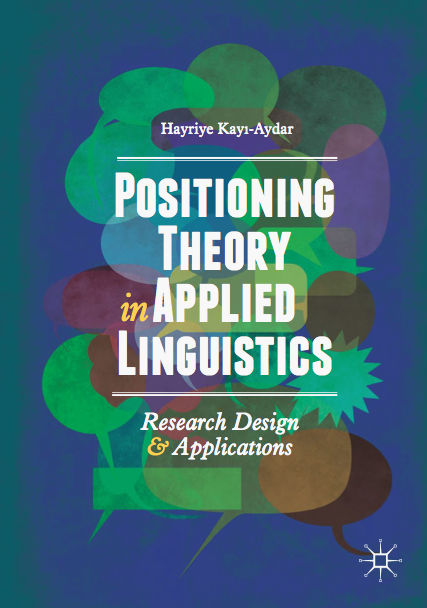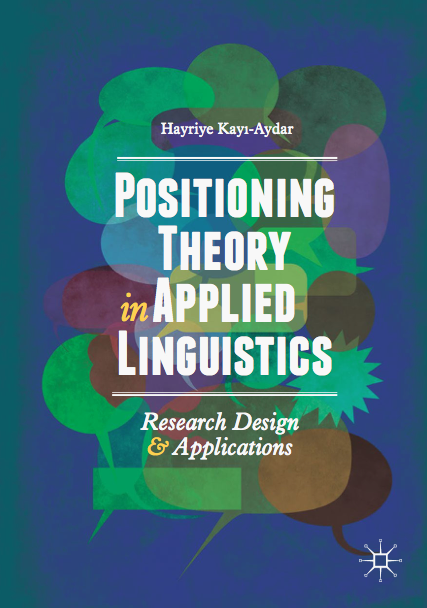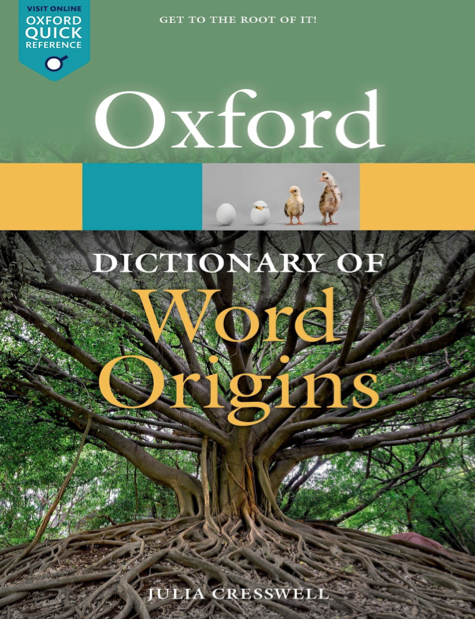Positioning Theory in Applied Linguistics: Research Design and Applications | Hayriye Kayi-Aydar
![]()
Hayriye Kayi-Aydar Structuralist Philosophy Conversation Etiquette Guides Linguistics Structuralism Philosophy
- درباره کتاب
- بخشی از کتاب
- نظرات
This book is about Positioning Theory (Davies & Harré, 1990) and its potential applications in bilingual and multilingual contexts involving teachers, learners, speakers, and users of a second/foreign or additional language. By using Positioning Theory as a theoretical lens and analytical approach, the author illustrates how various social and poststructural concepts in applied linguistics and language teacher education, including identity, agency, language socialization, classroom participation, and intercultural communication, can be investigated and better understood. The book adds a new perspective to the growing body of multidisciplinary literature in the areas of L2 teacher education and classroom learning, and includes step-by-step guidelines for positioning analysis, insights and implications for classroom practice, as well as suggested directions for future research. It will be of particular interest to language teachers and teacher educators, as well as students and scholars of applied linguistics more broadly.
Editorial Reviews
Review
“Kayi-Aydar takes a pedagogical approach in explaining positioning theory with clarity and simplicity that makes reading the book a rewarding experience. It is clearly written for educational researchers just discovering the theory, although it will benefit anyone interested in discourse and identity. … Positioning Theory in Applied Linguistics effectively is accessible and usable for researchers.” (Felix Kwihangana, Educational Review, Vol. 73 (2), 2021)
Review
“This book is one of the first to focus upon how to link Positioning Theory to empirical research. As such, it is very much welcomed source-book to the growing community of scholars and practitioners that aim to use Positioning Theory as a theoretical framework for the analysis of different professional practices and societal problems. At the same time Kayi-Aydar’s book also contributes to the refinement of the discursive basis of Positioning Theory.” (Luk Van Langenhove, Vrije Universiteit Brussel, Belgium)
“This book offers a coherent, informative account of positioning theory and its applications in applied linguistics. It brings together for the first time multiple disciplinary strands in a way that makes positioning theory evidently relevant and important for applied linguistics research. The book is very well-written, well-constructed, and immensely readable.” (Gary Barkhuizen, University of Auckland, New Zealand)
“This is the first book to offer a comprehensive discussion of the theoretical and analytical relevance of positioning theory for applied linguistic scholarship. Kayi-Aydar has produced an accessible overview of the key components of the theory and offers practical guidance for applying it to one’s research with language learners and teachers. As such, it will be a highly sought after text by both new and seasoned scholars in our field.” (Elizabeth R. Miller, University of North Carolina at Charlotte, USA, and author of The Language of Adult Immigrants: Agency in the Making (2014))
“This innovative, clear, very well organized book demonstrates the applied power of positioning theory in the educational setting. Hayriye Kayi-Aydar has added in exciting ways to the fast-expanding literature on positioning theory by demonstrating how positioning processes underlie changes in identity as second-language teaching and learning takes place. I strongly recommend this book to both teachers and students interested in second language learning, as well as positioning and identity.” (Fathali M. Moghaddam, Georgetown University, USA, and author of Mutual Radicalization: How Groups and Nations Drive Each Other to Extremes (2018))
“Kayi-Adar’s conceptualization and application of positioning as both theory and method provides useful insights into investigating classroom discourse and narrative texts. This book is an excellent resource for applied linguists and teacher educators who are committed to understanding how power dynamics play out in second/foreign language learning and teaching.” (Peter De Costa, Michigan State University, USA)
From the Back Cover
This book is about Positioning Theory (Davies & Harré, 1990) and its potential applications in bilingual and multilingual contexts involving teachers, learners, speakers, and users of a second/foreign or additional language. By using Positioning Theory as a theoretical lens and analytical approach, the author illustrates how various social and poststructural concepts in applied linguistics and language teacher education, including identity, agency, language socialization, classroom participation, and intercultural communication, can be investigated and better understood. The book adds a new perspective to the growing body of multidisciplinary literature in the areas of L2 teacher education and classroom learning, and includes step-by-step guidelines for positioning analysis, insights and implications for classroom practice, as well as suggested directions for future research. It will be of particular interest to language teachers and teacher educators, as well as students and scholars of applied linguistics more broadly.
Hayriye Kayi-Aydar is Assistant Professor of English Applied Linguistics at the University of Arizona, USA. Her research encompasses discourse, narrative, and English as a Second Language (ESL) pedagogy, at the intersections of interactional sociolinguistics and poststructural approaches to Second Language Acquisition (SLA).
About the Author
Hayriye Kayi-Aydar is Assistant Professor of English Applied Linguistics at the University of Arizona, USA. She teaches in the MA ESL and PhD SLAT programs. Her research encompasses discourse, narrative, and English as a Second Language (ESL) pedagogy, at the intersections of interactional sociolinguistics and poststructural approaches to Second Language Acquisition (SLA). She has published in journals such as TESOL Quarterly, System, ELT Journal, Critical Inquiry in Language Studies, Classroom Discourse, Teaching and Teacher Education and Journal of Language, Identity, and Education.











هنوز نظری ثبت نشده
اولین نفری باشید که نظر میدهید
ثبت نظر